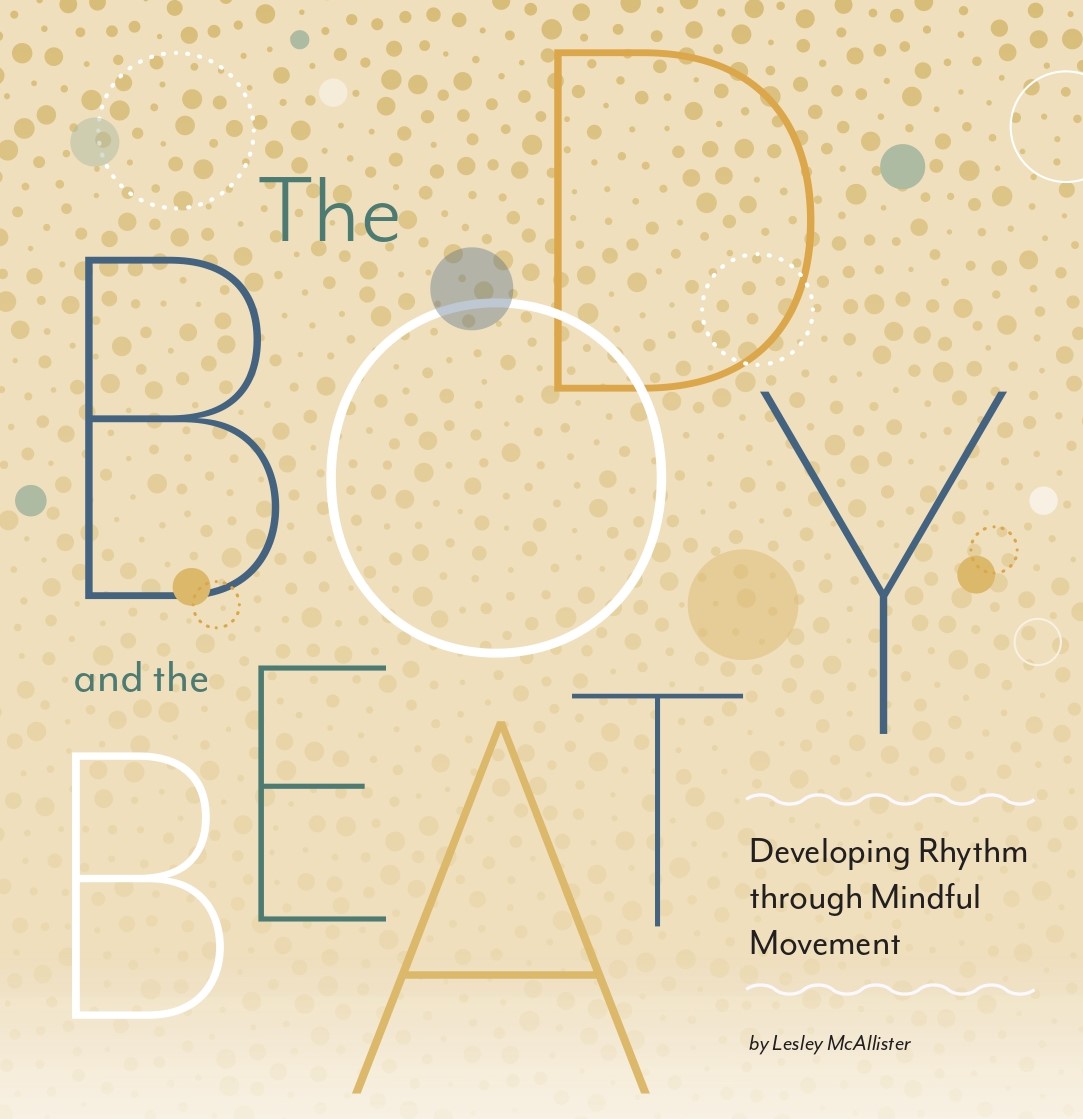We would like to thank Lesley McAllister for this insightful article on rhythm and movement. To read the full article, click here.

Movement, for children, is necessary for learning. Young bodies are fine-tuned sensory receptors collecting information, curious and eager to explore the world around them.1 The young child is in a period of sensitivity for gaining kinesthetic and sensory awareness, along with awareness of their own thoughts and emotions—which sometimes seem overwhelming. Learning through movement allows children to engage in joyful, intuitive experiences that lead to productive listening habits. This playful engagement keeps students attentive to their bodies while allowing abstract concepts like rhythmic notation to grow from natural experiences.
The joy of moving and responding to music is inborn, as seen in babies who dance by moving their bodies to music even before they can walk. There are strong two-way connections in the human brain between our auditory cortex and motor-control center.2 The rhythmic impulse is the driving force behind all music, and students who do not develop a strong sense of pulse early on in their musical studies may later lack melodic shaping, fluency, and momentum; in short, they will not sound musical.
Yet, for many teachers, the ways in which we work with rhythm are more mathematical than musical; students may learn to “count,” but not to truly feel the rhythmic drive in their bodies. The emphasis should not be just on rhythmic reading, but also on listening and responding to rhythmic patterns. While any musical concept can be experienced as whole-body movement, it is ideally suited for the internalization of pulse and the experience of contrasting tempi, meters, and rhythmic patterns.
The Benefits of Mindful Movement
When rhythmic practice is combined with slow, integrated movement, and particularly when used in correlation with the breath, the benefits are magnified. The positive impact of mindful movement on cognitive, physical, and emotional skills has been well-documented in research, with physical benefits including improved coordination, body awareness, and postural stability.
Mindful movement also boosts concentration and attention, increases memory, and improves the set of mental skills called “executive function skills,” which include the ability to plan, organize, and stay focused on tasks while resisting distractions. It enhances myelination between the two brain hemispheres, allowing for integrative processing across the whole brain, and relieves stress, resulting in better listening, comprehension, and retention of concepts.3
There are even musical benefits, too. Mindful movement increases auditory processing and responsiveness and assists with the development of the vestibular system or the inner ear, which is involved not just in balance and spatial orientation, but also in language processing and sound discrimination. With these benefits, mindful movement is particularly beneficial for children with special needs including those with ADHD, sensory processing disorder, anxiety, and autism.4

We hope you enjoyed this excerpt from Lesley McAllister’s article “The Body and the Beat: Developing Rhythm through Mindful Movement.” You can read the entire article by clicking here.
Notes
1 Carla Hannaford, Smart Moves: Why Learning is Not All in Your Head, 2nd ed. (Salt Lake City, UT: Great River Books, 2005), 92.
2 Adriana Barton, Wired for Music: A Search for Health and Joy through the Science of Sound (Berkeley, CA: Greystone Books, 2022), 36.
3 Lesley McAllister, Yoga in the Music Studio (New York: Oxford, 2020).
4 Lisa Flynn, Yoga for Children: 200+ Yoga Poses, Breathing Exercises, and Meditations for Healthier, Happier, More Resilient Children (Avon, MA: Adams Media, 2013), 56.
MORE ON HEALTHY MOVEMENT
- MAGAZINE ARTICLE: Checking In: Mindful Body Awareness for Pianists by Laura Amoriello
- MAGAZINE ARTICLE: My Journey to Healthy Musicianship: Practical Ideas for Exploration and Self-Reflection in the Piano Studio by Carla Salas-Ruiz
- WEBINAR: The Physiology of Piano Teaching and Performing with Lesley McAllister, Scott Donald, and Paula Wong
- MAGAZINE ARTICLE: Wellness: Why Can’t We All Just Relax? by Misty Austin
- WEBINAR: Teach, Breathe, Move, Repeat: Tips for Physical Wellness during a Pandemic with Laura Amoriello, Lesley McAllister, and Paola Savvidou
- MAGAZINE ARTICLE: Healthy Playing, Healthy Teaching The Mind-Body Connection; The Brain, and Making Music by Lois Svard